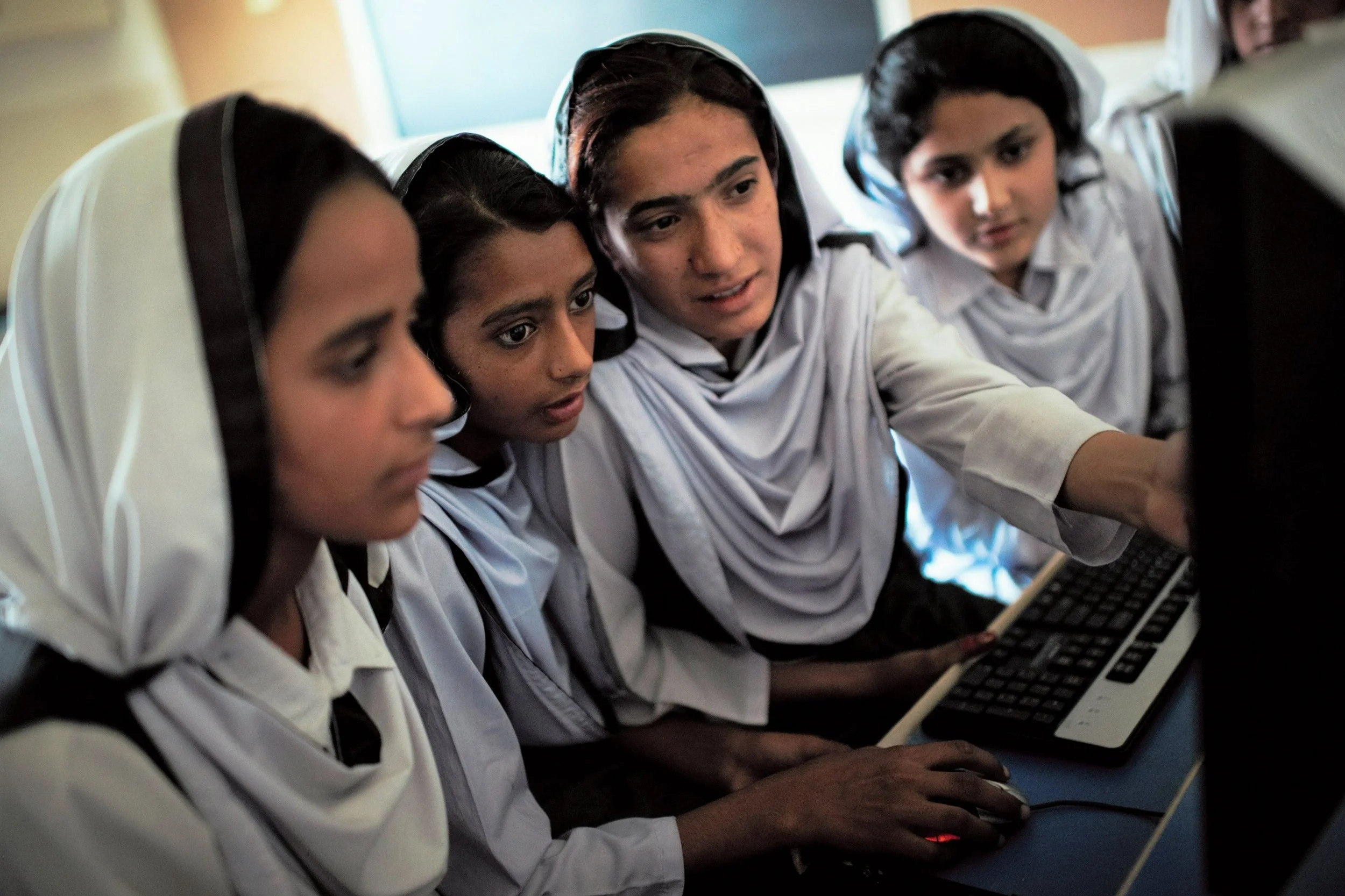
EdTech and Innovation
While technology has led to improvements in productivity in a variety of sectors since the 1990s, it has not had the same effect on education. This portfolio of research explores why that’s the case and how we can change it. Low-income countries in particular struggle with EdTech due to the often prohibitively high cost of technology and the lack of consideration by developers for their contexts. We use specially designed EdTech, developed for this market specifically and user tested by local educators, to overcome barriers to EdTech takeup and encourage innovation and learning improvements.
Read the Summaries or Take a Deeper Dive
Education Support Services
Image: Evidence for Policy Design
Past LEAPS work shows that while there are abundant markets for physical infrastructure and other “hard” investments, there are few for “soft” investments such as curriculum development, school assessments, and teacher training.
-
Does providing private school owners with easy access to education support services (ESS), such as teacher training, e-learning tools, and textbooks incentivize them to invest in such services?
Do ESS products have an impact on school business outcomes and student learning?
Does pairing access to ESS with financing with which to buy them increase either their take-up or impact?
-
Despite a wide variety of ESS materials made available to school owners, the overwheming majority chose to invest in textbooks over any other ESS product.
ESS products appear to increase overall school enrollment and therefore school revenues.
Education Marketplace Platform
Image: Developments in Literacy
Building on the ESS study, the Ilm Exchange marketplace platform aims to provide schools easy access to a large marketplace of educational goods and services, including financial services. The objective of the platform is to match schools to the products and services in an affordable manner.
-
Is there demand from schools for a large aggregated platform of education services?
Is there enough supply of various products to meet demand?
What products are schools buying from the platform and why?
-
When piloting the platform, 56% of expressions of interest resulted in a successful transaction, suggesting school owners are open to the concept.
Most transactions took place in three categories of products: stationery & printing, textbooks, and the management information tool.
Schools are interested in actively using the digital marketplace for purchasing education services and products if the platform ensures these three primary elements: better pricing, high quality products, and good customer service.
MiSchool: A School Management Software
Image: U.S. Agency for International Development
MiSchool is a management information tool that enables school leaders to effectively manage and monitor their school operations and financial resources. The tool helps in tracking and monitoring student and staff activities and provides robust analytics on school performance.
-
Is there demand for school management software in the low-cost private school market?
How much are school owners willing to pay for such a product?
Does a school management software like MiSchool improve school-level performance, such as revenues or enrollment?
-
There is a real need and a significant market for a management tool like Mischool. Currently, there are more than two dozen established products in the market.
The tool increases school revenues. Mischool provides an effective financial management system that can help in fee recovery and expense management.
Schools use the tool to differentiate itself from other schools in a fairly competitive market.
Empowering Actors Though Technology
Image: shutterstock.com
School closures due to the COVID-19 pandemic have highlighted the need for different actors, including those outside of the school, to play a role in children’s education. This study examines whether a technology-aided intervention can empower actors to better guide children’s learning.
-
Do actors know enough about child learning levels and possible learning activities they could utilize to enhance their child’s learning?
Are actors able to deploy information on the child’s learning gaps and learning activities, to better guide the child’s learning?
Will providing either information, guidance, or both to school- and home-based actors through a technology tool improve learning?
-
Similar use of the learning materials provided by the technology tool we propose to use in this intervention has had a huge impact on boosting student learning.
Our pilot study with 1,900 students found that performance on our diagnostic test in English, Math, and Urdu increased 13.5 to 14.1% (0.5-0.6 standard deviations) in schools that utilized the tools and content library.




